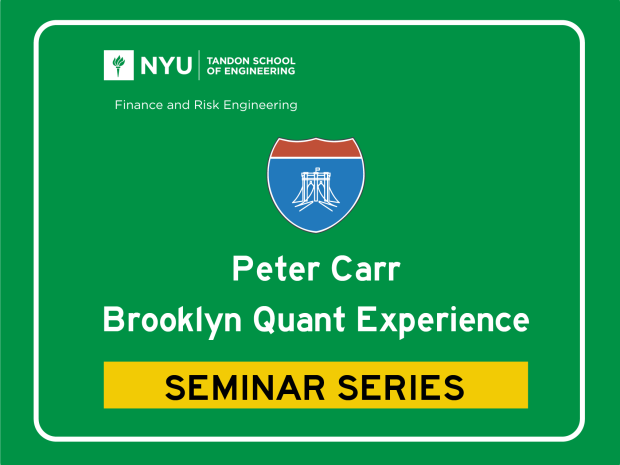Peter Carr Brooklyn Quant Experience (BQE) Lecture Series: Stephen Figlewski

We are excited to welcome Stephen Figlewski, NYU Stern Retired Emeritus Professor.
Title
Beyond Black and Scholes: What Can the Q-Distribution Tell Us About the Risk Neutralization Process?
Abstract
The Black-Scholes model is the established benchmark for option pricing in finance, and well beyond, into law, regulation, and other realms. The theoretical model is derived from riskless arbitrage, so the effect of risk aversion is eliminated when valuing the option relative to the stock. But real-world arbitrage is costly and risky, and option market prices deviate from model values, most notably in the implied volatility smile or skew. Much research has extended "arbitrage-free" pricing to more elaborate returns processes with flatter smiles. But these models can no longer be supported by riskless arbitrage, and they still leave risk preferences out. They have not led to an agreed substitute for Black-Scholes. Black-Scholes assumes the true returns distribution—the P distribution—is lognormal. The market prices options under a modified Q distribution that embeds both risk premia and non-lognormal returns expectations. Unlike the P, the Q can be extracted from observed option prices.
Differences between the Q and P distributions reflect the factors investors put into their demand for options that are not in the BS model. This paper explores these differences for E-mini S&P 500 index futures and options, a market with huge trading volume, very low transactions costs, and an underlying that is one of the most important financial markets in the world. Unlike the VIX index, which is derived from the same information, but condenses it into a single number, the Q reveals detailed information about the financial environment and the impact of an event across the space of expected returns. The paper illustrates potential applications of the Q distribution in a variety of contexts. We document systematic differences between P and Q, such as that the Q has a fatter left tail but thinner right tail, and in how they respond to returns behavior, like price jumps. Q-P differences can reveal broad variations in market optimism and tolerance for risk, as manifested in surveys like the Michigan Survey of Consumer Sentiment, or by market yield spreads on risky bonds. Changes in Q-P differences allow a detailed look at how the market responds to information bevents like the FOMC announcements.
Bio
Stephen Figlewski is Professor of Finance, Emeritus at the New York University Leonard N. Stern School of Business. He holds a B.A. in Economics from Princeton University and a Ph.D. in Economics from the Massachusetts Institute of Technology. He has published extensively in academic journals, especially in the area of financial futures and options. He was the founding Editor of The Journal of Derivatives, serving as Editor for 25 years, and he edits the Derivatives eJournal series published over the Internet. He was the founder and director of the NASDAQ Derivatives Research Project at Stern, which provided research support and sponsored conferences at Stern in derivatives, risk management, and financial engineering. Professor Figlewski has twice taken leaves from NYU to work on Wall Street, doing research on equity derivatives and credit-sensitive securities, and he was at one time a member of the New York Futures Exchange and a Competitive Options Trader at the New York Stock Exchange.
NYU Students are highly encouraged to attend in person. All other non-NYU guests are invited to attend virtually unless otherwise noted.
Meeting ID: 925 8574 5506
Password: BQE1116SF

